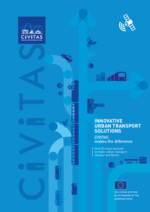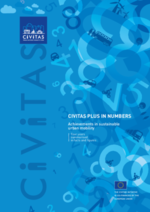
Craiova (Romania)
The historical city of Craiova in south-west Romania spreads over an area of 81.4 km² and boasts 298,000 inhabitants. The number of cars in the city has skyrocketed in recent years and is taking its toll on the urban environment and quality of life in the city.
Craiova, the capital of the Oltenia region, is a commercial and cultural centre located 200 km from Bucharest. Its foundation dates back to 400 - 350 BC and developed into an important market town that later on also took on administrative responsibilities. Today, Craiova is known for its university and is a centre for gas and petroleum, petrochemical, thermo and hydro power plants. It is also in an open-pit mining area. The Craiova municipality consists of seven compound villages and will be expanded to include another 17 villages in the future.
After Romania’s accession to the EU, Craiova recorded rapid economic growth that was accompanied by an increase in motorised vehicles. As in other urban centres, air and noise pollution in Craiova are getting worse year by year. The public transport system in Craiova consists of trams, buses and microbuses amounting to 250 vehicles that carry 65 million passengers every year. The city of Craiova is aware that older vehicles will need to be replaced with newer models that services need to become faster, and fuel consumption.
By joining CIVITAS MODERN, Craiova reaffirmed its commitment to the development of a clean and integrated urban transport system. First and foremost, Craiova wanted to improve the quality and effectiveness of its public transport system as a counterweight to the increase in private cars. Measures to improve the quality of public transport were supported by the adoption of access and circulation restrictions, which were novel concepts in Romania to date.
Craiova replaced old vehicles with new ecological buses and introduced biodiesel to the fuel of the bus fleet. The renewal of the fleet was expected to significantly lower emissions and the traffic light regulation scheme supported to prioritise buses. An e-ticketing system was installed on 40 trams together with a satellite-based automatic vehicle monitoring (AVM) system that provided real-time information on at least 20 important bus stops. The installation of a new electronic control system on 27 trams enabled a significant saving on energy.
To enhance safety, five public transport stations, 10 buses and five trams were equipped with video-surveillance connected to the police department. In addition, Craiova involved companies in improving transport services for their employees. Altogether, these actions helped to contain the growing car traffic and maintain or possibly increase the modal share of public transport. In addition, they contributed to lower pollution and enhance the environment and quality of life in Craiova.
















